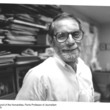Timefulness: how thinking like a geologist can help save the world
Description
Why an awareness of Earth’s temporal rhythms is critical to our planetary survivalFew of us have any conception of the enormous timescales in our planet’s long history, and this narrow perspective underlies many of the environmental problems we are creating for ourselves. The passage of nine days, which is how long a drop of water typically stays in Earth’s atmosphere, is something we can easily grasp. But spans of hundreds of years—the time a molecule of carbon dioxide resides in the atmosphere—approach the limits of our comprehension. Our everyday lives are shaped by processes that vastly predate us, and our habits will in turn have consequences that will outlast us by generations. Timefulness reveals how knowing the rhythms of Earth’s deep past and conceiving of time as a geologist does can give us the perspective we need for a more sustainable future.Marcia Bjornerud shows how geologists chart the planet’s past, explaining how we can determine the pace of solid Earth processes such as mountain building and erosion and comparing them with the more unstable rhythms of the oceans and atmosphere. These overlapping rates of change in the Earth system—some fast, some slow—demand a poly-temporal worldview, one that Bjornerud calls “timefulness.” She explains why timefulness is vital in the Anthropocene, this human epoch of accelerating planetary change, and proposes sensible solutions for building a more time-literate society.This compelling book presents a new way of thinking about our place in time, enabling us to make decisions on multigenerational timescales. The lifespan of Earth may seem unfathomable compared to the brevity of human existence, but this view of time denies our deep roots in Earth’s history—and the magnitude of our effects on the planet.
More Details
Table of Contents
From the Book
Excerpt
Similar Titles From NoveList
Similar Authors From NoveList
Published Reviews
Choice Review
In reading Timefulness, one encounters a clear, engaging text grounded in years of teaching, thinking, and conversations about the struggles of humans to relate themselves to geologic time. With this goal in mind, Bjornerud (geology, Lawrence Univ.) has crafted a masterful work filled with rich analogues spanning topics from music references to bell bottoms to folding paper; her engaging approach helps readers of all levels see Earth history through fresh eyes. A central argument is that we must not think of rocks as simple objects (nouns) but as the embodiment of Earth's change (verbs). Bjornerud also stresses that our evolutionary roots link us to all of biological time--not just human history--and therefore we must take a longer view of our future and past together. The instructor of introductory geology may be tempted to jettison the boring, clinical geology textbook chapter on geologic time and instead assign this book. Topical chapters give the reader a fresh perspective on various aspects of earth science, including tectonics, climate change, and extinctions. The book as a whole functions as a blueprint for how to have conversations with anyone about the sensitive state of our planet. Summing Up: Highly recommended. All levels. --Jade Star Lackey, Pomona College

































